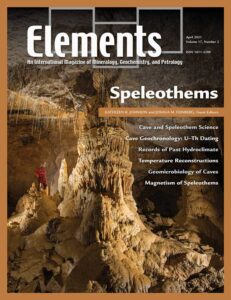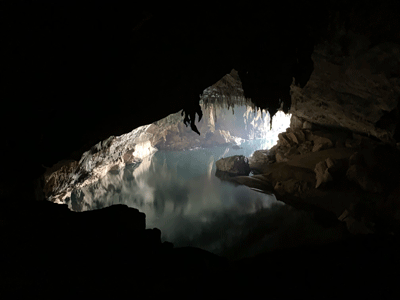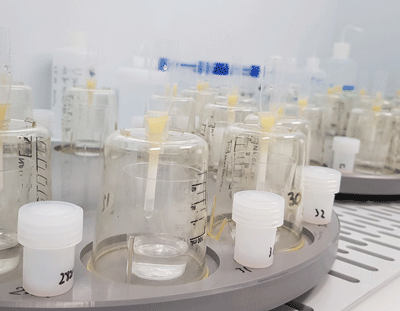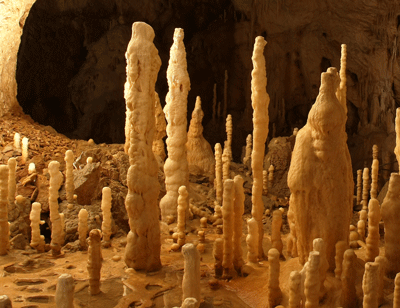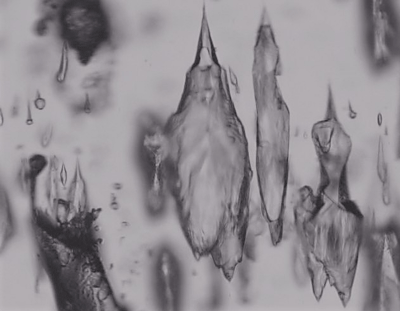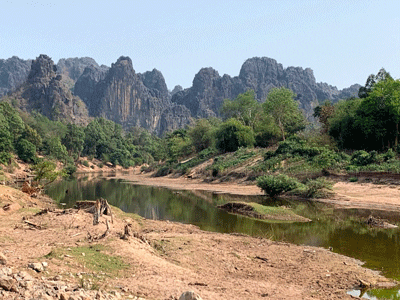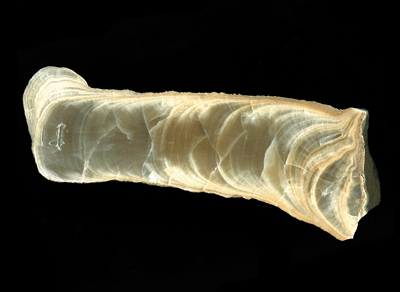Speleothems
Kathleen R. Johnson and Joshua M. Feinberg – Guest Editors
Table of Contents
Growing slowly drip by drip through the millennia, stalagmites, stalactites, and flowstone—collectively known as speleothems—are some of the most fantastic mineral features in nature. Speleothems are also critical archives of past environments, and their study incorporates expertise from groundwater hydrogeology and geochemistry, atmospheric chemistry, climate science, geobiology, and even geophysics. Research on speleothem trace element and isotopic geochemistry, constituent organic compounds, noncarbonate minerals, and morphology can help illuminate paleoenvironmental conditions and document historical anthropogenic land-use changes. This issue of Elements will introduce the many ways that speleothems are used within the geoscience community to learn about natural Earth processes and our role in modifying them.
- Cave and Speleothem Science: From Local to Planetary Scales
- Uranium–Thorium Dating of Speleothems
- Tales from the Underground: Speleothem Records of Past Hydroclimate
- Temperature Reconstructions Using Speleothems
- Cave Decorating with Microbes: Geomicrobiology of Caves
- Attraction in the Dark: The Magnetism of Speleothems
CAMECA
Crystal Maker
Excalibur Mineral Corporation
International Association of Geoanalysts
ProtoXRD
ThermoFisher Scientific
v17n3 Exploring Earth and Planetary Materials with Neutrons
GUEST EDITORS: David R. Cole(Ohio State University, USA) and Nancy L. Ross(Virginia Tech, USA)
For over half a century, the structural details and the dynamics of atomic arrangements in materials have been determined using neutron-based scattering and absorption measurements. Neutron scattering experiments have contributed valuable information on geological materials and how these interact with fluids. In situ studies of transformations and fundamental properties can emulate diverse environments from Earth’s surface to its deep interior. Potential growth of the “neutron community” is being realized with the development of new and improved neutron sources. This issue of Elements will familiarize the reader with the basic concepts of neutron scattering, the methods that are available to Earth scientists, provide a summary of facilities around the world, and give key applications of the technique.
- Neutron Scattering: A Beginners’ Guide for Earth Scientists
Nancy L. Ross (Virginia Tech, USA) and David R. Cole (Ohio State University, USA) - Where is the Hydrogen?
Diego Gatta (University of Milan, Italy), Klaudia Hradil (Vienna University of Technology, Austria), and Martin Meven (RWTH Aachen University, Germany) - Phase Transitions and Magnetism in Minerals
Bryan C. Chakoumakos (Oak Ridge National Laboratory, USA) and John B. Parise (Stony Brook University, New York, USA) - Probing the Structure of Melts, Glasses, and Amorphous Materials
Chris J. Benmore (Argonne National Laboratory, USA) and Martin C. Wilding (Sheffield Hallam University, UK) - Nanoscale Structure and Dynamics in Geochemical Systems
Andrew G. Stack (Oak Ridge National Laboratory, USA), Hsiu-Wen Wang (Oak Ridge National Laboratory, USA), and David R. Cole (Ohio State University, USA) - Imaging with Neutrons
Gilberto Artioli (University of Padua, Italy) and Daniel S. Hussey (National Institute of Standards and Technology, USA)
- Shedding Light on the European Alps (February 2021)
- Speleothems (April 2021)
- Exploring Earth and Planetary Materials with Neutrons (June 2021)
- Geoscience Beyond the Solar System (August 2021)
- Carbonatites (October 2021)
- Heavy Stable Isotopes: From Crystals to Planets (December 2021)



